The Great Sphinx of Giza is one of the most iconic landmarks in Egypt and the world. Standing proudly on the Giza Plateau, this ancient monument has captivated travelers, historians, and archaeologists for centuries. But what can visitors actually expect when they visit this awe-inspiring statue? Here’s a guide to help you make the most of your trip to the Great Sphinx of Giza.
- Egypt Tour Magic
- Egypt Tour Packages
- Excursions in Egypt
- Cairo Tours and Excursions
- Hurghada Tours and Excursions
- Soma Bay Tours and Excursions
- Makadi Bay Tours and Excursions
- Sahl Hasheesh Tours and Excursions
- El Gouna Tours and Excursions
- Marsa Alam Tours and Excursions
- Port Ghalib Tours and Excursions
- El Quseir Tours and Excursions
- Dendera and Abydos Day Tours
- Aswan Tours and Excursions
- Luxor Tours and Excursions
- Alexandria Tours and Excursions
- Sharm El Sheikh Tours and Excursions
- Top Rated Tours in 2025
- Optional Excursions in Egypt
- Private Transfer
- Blogs About egypt
- Ancient Egypt
- What You Need To know Before Your First Trip To Egypt
- Best Places to Visit in Egypt 2025
- Top Attractions in Red Sea Resorts 2025
- Top 10 Tourist Activities in Egypt
- Top 30 Activities You Can’t Miss in Egypt
- The Guide to Guided Tours in Egypt
- Egypt’s Ancient and Modern History
- The Nile River
- The Deserts of Egypt
- Historical Sites in Egypt
- Cairo
- Alexandria
- Luxor
- Aswan
- The Red Sea
- Dendera Temple
- El Fayoum Oasis
- Bahariya Oasis
- Siwa Oasis
- Al Alamein
- Marsa Matruh
- Ancient Egyptian gods
- famous Egyptian dishes
- UNESCO World Heritage sites
- About Us
- Why Egypt Tour Magic
- Egypt Tour Magic
- Egypt Tour Packages
- Excursions in Egypt
- Cairo Tours and Excursions
- Hurghada Tours and Excursions
- Soma Bay Tours and Excursions
- Makadi Bay Tours and Excursions
- Sahl Hasheesh Tours and Excursions
- El Gouna Tours and Excursions
- Marsa Alam Tours and Excursions
- Port Ghalib Tours and Excursions
- El Quseir Tours and Excursions
- Dendera and Abydos Day Tours
- Aswan Tours and Excursions
- Luxor Tours and Excursions
- Alexandria Tours and Excursions
- Sharm El Sheikh Tours and Excursions
- Top Rated Tours in 2025
- Optional Excursions in Egypt
- Private Transfer
- Blogs About egypt
- Ancient Egypt
- What You Need To know Before Your First Trip To Egypt
- Best Places to Visit in Egypt 2025
- Top Attractions in Red Sea Resorts 2025
- Top 10 Tourist Activities in Egypt
- Top 30 Activities You Can’t Miss in Egypt
- The Guide to Guided Tours in Egypt
- Egypt’s Ancient and Modern History
- The Nile River
- The Deserts of Egypt
- Historical Sites in Egypt
- Cairo
- Alexandria
- Luxor
- Aswan
- The Red Sea
- Dendera Temple
- El Fayoum Oasis
- Bahariya Oasis
- Siwa Oasis
- Al Alamein
- Marsa Matruh
- Ancient Egyptian gods
- famous Egyptian dishes
- UNESCO World Heritage sites
- About Us
- Why Egypt Tour Magic
What to Expect at the Great Sphinx of Giza: A Timeless Wonder

1. A Glimpse of Ancient Egypt
The Great Sphinx of Giza is a remarkable fusion of human and animal characteristics—half lion, half pharaoh—making it one of the most unique and striking monuments in the world. Its vastness and mystery provide a tangible connection to ancient Egypt, offering visitors a rare chance to witness a piece of history that has stood for over 4,500 years. The Sphinx’s precise craftsmanship and the scale of the monument suggest the incredible skill and ambition of ancient Egyptian builders. Most historians believe it represents Pharaoh Khafre, who ruled during the Old Kingdom’s Fourth Dynasty. As you stand before the Sphinx, you’re transported back in time to an era of immense architectural achievement, where pyramids and monumental statues symbolized divine power and earthly immortality. The enormity of the monument’s scale makes you appreciate the profound significance it held for the Egyptians, as they believed it embodied the power and wisdom of the gods. This connection to ancient Egypt offers a unique window into the civilization’s religious, cultural, and political fabric. The Sphinx itself was more than a statue—it was part of a larger narrative about the afterlife, protection, and the role of the pharaoh as a divine ruler. As you gaze upon it, you’re reminded of how much has been lost to time, yet how much still remains to be discovered. The Sphinx stands as a timeless sentinel to Egypt’s grandeur and the enduring mystery of its civilization.
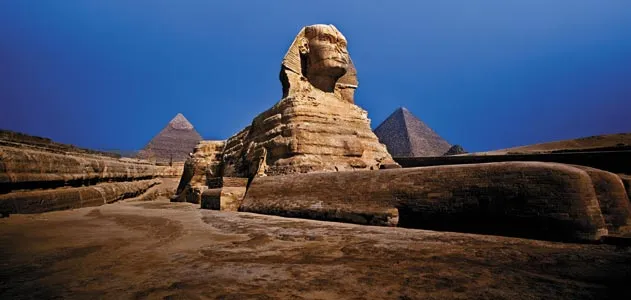
2. The Monument’s Size and Scale
When you first lay eyes on the Great Sphinx, one of the first things you’ll notice is its sheer size. The Sphinx stands an impressive 66 feet (20 meters) tall and stretches 240 feet (73 meters) long, making it one of the largest statues of the ancient world. The scale of the monument is awe-inspiring, and the sheer size makes it feel like you’re in the presence of something colossal. It’s hard to grasp the enormity of the Sphinx until you stand right next to it. The human face, which represents the Pharaoh Khafre, is about 12 feet (3.6 meters) wide, but it’s the lion’s body that dominates the overall impression. Its massive size not only highlights the artistic and architectural feats of the ancient Egyptians but also speaks to the symbolic power it was meant to embody. The Sphinx was likely built to serve as a guardian figure, watching over the Giza Plateau and its surrounding tombs. The monument's colossal size likely had a symbolic purpose, representing the power and protection of the king, as well as his connection to the divine. Standing before the Sphinx gives visitors a sense of perspective on the scope of ancient Egyptian engineering. It’s humbling to think that such a structure was built thousands of years ago, without the technology we take for granted today. Despite the erosion it has faced over the centuries, the size of the Sphinx continues to make a lasting impression on anyone who sees it up close. It’s not just a statue, but a testament to the skill, vision, and devotion of those who built it.
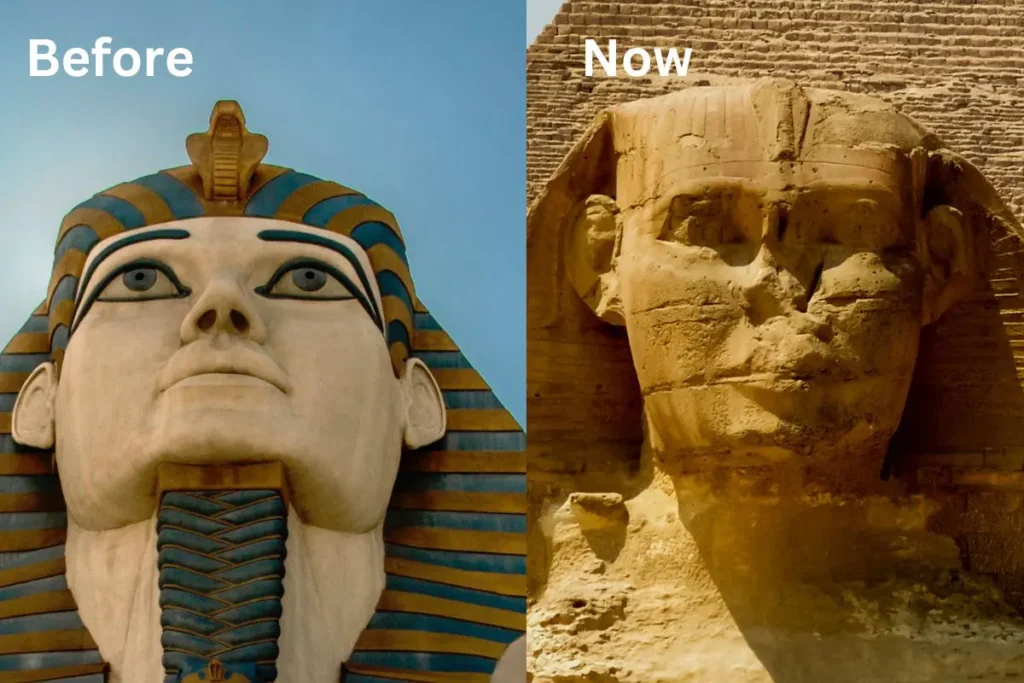
3. A Close-Up of the Sphinx
One of the most captivating experiences of visiting the Great Sphinx is the opportunity to examine it up close. As you approach the monument, the weathered details of the statue become more apparent. The Sphinx’s face is a striking blend of mystery and majesty, with the prominent features of the face—its eyes, nose, and mouth—almost commanding attention. The eyes, in particular, have a depth that seems to peer into the future, adding to the sense of mystique surrounding the monument. While the nose is partially damaged, with most of it having been destroyed centuries ago, the remaining facial features continue to evoke a sense of solemnity and power. Some theories suggest that the nose may have been deliberately destroyed, while others attribute the damage to erosion and vandalism over time. The mouth, with its enigmatic smile, adds to the air of mystery, suggesting an expression of calm wisdom. As you walk around the Sphinx, the detailed limestone carvings and the interplay of shadow and light can reveal new facets of its form, especially when the sun casts long shadows in the late afternoon. The monumental size of the Sphinx allows for different viewing angles, and each one offers a fresh perspective on this ancient wonder. Whether you’re gazing at it from the front, or from a slightly off-center angle, each moment spent studying the Sphinx brings you closer to understanding its historical significance, not just as a physical monument, but as a piece of living history.
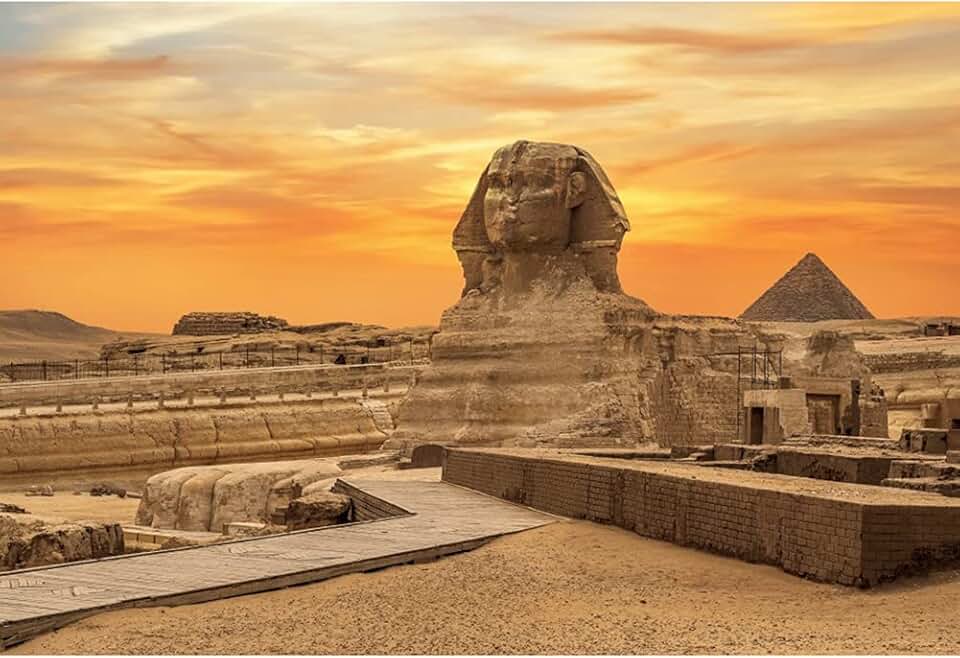
4. The Enigmatic History of the Sphinx
The Great Sphinx has an aura of mystery that has intrigued scholars and tourists alike for centuries. Though most historians believe that it was built during the reign of Pharaoh Khafre, its true origins remain shrouded in uncertainty. Some believe that it was carved around 2500 BCE, during the Fourth Dynasty of Egypt’s Old Kingdom, as part of a grand burial complex for the pharaoh. However, other theories suggest that the Sphinx could be much older than previously thought, perhaps predating Khafre’s time by centuries. The lack of definitive historical records leaves room for speculation, adding to the intrigue surrounding the monument. Some scholars have even proposed that the Sphinx could have been built by an earlier civilization or may have originally represented a different ruler or deity. Theories about the purpose of the Sphinx also vary. While it is commonly believed to serve as a guardian for the Giza Plateau, others suggest that it could have had an astronomical or religious purpose. Some have even speculated that it may have been part of a larger complex of monuments that served as markers for important celestial events, such as the solstices. The Sphinx’s enduring mystery continues to captivate the imagination of visitors, historians, and archaeologists alike, as they strive to unravel its secrets. No matter which theory you subscribe to, one thing is certain: the Great Sphinx of Giza represents a significant chapter in the story of ancient Egypt and continues to fascinate and inspire people around the world.
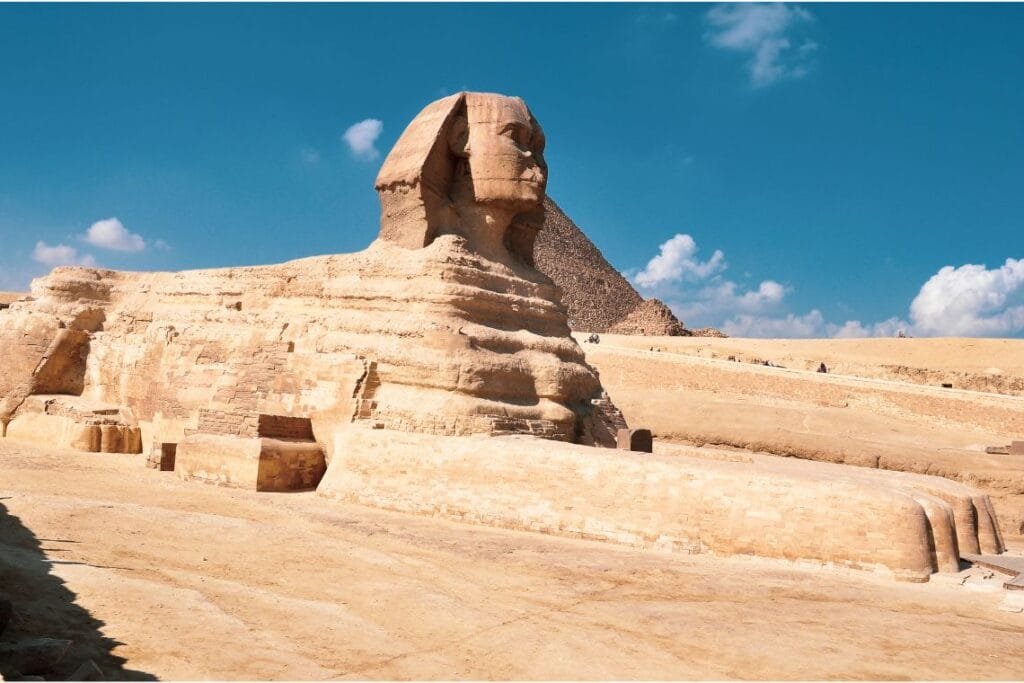
5. The Sphinx and Its Surroundings
One of the most striking aspects of the Great Sphinx is its location. It sits at the entrance to the Giza Plateau, flanked by the Pyramids of Giza, which are also one of the Seven Wonders of the Ancient World. The Sphinx is situated near the Pyramid of Khafre, which further reinforces the belief that the monument was built to honor this pharaoh. The proximity of the Sphinx to the pyramids gives visitors the opportunity to reflect on the grand scale of the ancient Egyptian funerary complex, with the Sphinx likely intended to act as a protective figure for the tombs of the pharaohs. The Sphinx’s alignment with the pyramids also adds an astronomical and religious dimension to its significance. Some experts believe that the positioning of the Sphinx was intentionally designed to align with celestial events, such as the rising sun, which would have further cemented its role as a symbol of divine power. When you stand at the base of the Sphinx, you’ll feel a profound sense of awe as you look around at the surrounding landscape. The view of the pyramids from this vantage point is unforgettable, and it creates a sense of connection between the Sphinx and the other monumental structures that define the Giza Plateau. The Sphinx, though imposing in its own right, feels even more significant when viewed in context with its surroundings. Together, these ancient wonders offer a glimpse into the complexity and grandeur of ancient Egypt.
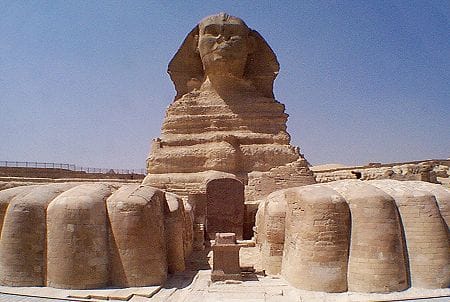
6. The Sphinx’s Mythical Significance
In ancient Egyptian culture, the Sphinx held deep symbolic meaning, representing strength, wisdom, and protection. As a creature that combines the lion’s body—associated with power and kingship—and the human head—representing intelligence and divine rule—the Sphinx was seen as a guardian of sacred spaces. In the context of the Giza Plateau, it is thought to have acted as a sentinel, watching over the tombs and burial complexes of the pharaohs. Lions were revered in Egyptian mythology for their power and ferocity, making the Sphinx an ideal representation of divine protection. Its human face, likely intended to depict Pharaoh Khafre, further cemented the Sphinx’s role as a symbol of kingship and the divine connection between the ruler and the gods. The Sphinx was also associated with the sun god Ra, who was often depicted as a lion. The Sphinx’s placement at the entrance to the pyramid complex suggests its role as a guardian, standing watch over the pharaoh’s journey to the afterlife. Many ancient Egyptians believed that the Sphinx’s presence would ensure that the pharaoh’s soul was protected in the afterlife, preventing any evil forces from interfering with the ruler’s passage to the next world. Today, the Sphinx remains a symbol of ancient Egyptian wisdom and power, and its enduring presence continues to inspire awe and respect from visitors around the world.

7. Getting to the Sphinx
The Great Sphinx of Giza is conveniently located just outside Cairo, making it easily accessible for visitors. Whether you're traveling from the bustling capital or staying in nearby hotels, the Sphinx is a short drive away, and there are many organized tours that will take you to the site. Many tourists visit the Sphinx as part of a guided tour that includes a visit to the nearby pyramids, allowing you to learn more about the monument’s history, construction, and significance. For those who prefer a more independent experience, it's also possible to visit the Sphinx on your own. The site is well-maintained, with plenty of facilities such as restrooms, cafes, and souvenir shops, making it a comfortable place to spend a few hours exploring. If you choose to visit independently, be sure to take time to appreciate the Sphinx from different angles, as each vantage point offers a unique view of this ancient marvel. The site is open year-round, and while it can get crowded, especially during peak tourist seasons, it’s well worth the visit. Whether you arrive early in the morning to catch the sunrise or visit in the late afternoon for a sunset view, the Sphinx offers a mesmerizing experience that is not to be missed.

8. Preservation and Efforts to Protect the Sphinx
The Great Sphinx has endured centuries of weathering and natural erosion, but ongoing efforts to preserve this ancient monument have helped protect it for future generations. Over the years, restoration projects have focused on stabilizing the structure and preventing further damage from wind, sand, and humidity. These restoration efforts have been a collaborative effort between Egyptologists, archaeologists, and conservationists. One of the most notable restoration projects took place in the 20th century, when the Sphinx's head and body were reinforced to prevent further degradation. Additionally, efforts have been made to prevent damage from modern urbanization, with regulations in place to limit the impact of nearby construction and tourism. Despite these challenges, the Sphinx remains a remarkable testament to ancient Egyptian engineering and artistry. Visitors are encouraged to respect the monument’s fragility by staying on designated paths and avoiding physical contact with the statue. These preservation efforts ensure that future generations can continue to appreciate the Sphinx's beauty and historical significance. As you visit, it's important to keep in mind the delicate balance between preserving this ancient wonder and allowing it to remain accessible to the public. By being mindful of the site’s importance and following the guidelines for responsible tourism, you can help protect the Sphinx for future visitors to enjoy.

9. Photography Tips
The Great Sphinx provides incredible opportunities for photography, but capturing the monument’s grandeur requires a bit of planning. One of the best times to photograph the Sphinx is during the golden hour, either early in the morning or late in the afternoon, when the sun casts warm, soft light on the statue. This enhances the Sphinx’s features and creates dramatic shadows that add depth to your photos. To get a full view of the Sphinx’s impressive size, consider taking shots from a distance, where you can capture both the statue and the surrounding pyramids. If you prefer a more intimate shot, you can focus on details like the Sphinx’s face or its intricate textures. Don’t forget to experiment with different angles and perspectives—looking up at the Sphinx from ground level can create an imposing effect, while capturing the Sphinx with the pyramids in the background provides a sense of scale. Be mindful, though, not to use flash photography too close to the monument, as it can cause damage to the limestone over time. And while it’s tempting to climb up for that perfect shot, it’s important to respect the rules and avoid standing on the monument itself. By following these simple photography tips, you’ll leave with memorable shots that capture the Sphinx in all its glory.
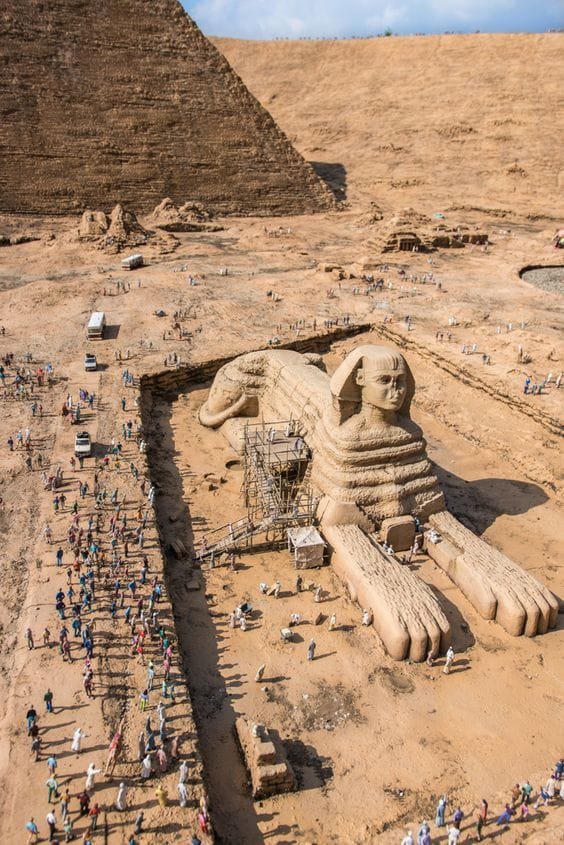
10. A Journey Through Time
Visiting the Great Sphinx of Giza is more than just a sightseeing trip; it's a journey through time. As you stand before this colossal statue, you're not just gazing at a work of art, but also witnessing a piece of human history that has withstood the test of time. The Sphinx is a tangible connection to the ancient world, offering a glimpse into the beliefs, values, and culture of one of the world's most advanced civilizations. The sense of awe and wonder you’ll feel as you look up at the Sphinx is a reminder of how much the ancient Egyptians achieved, both architecturally and philosophically. For visitors with an interest in history and archaeology, the Sphinx is a treasure trove of inspiration. But even for those with a more casual interest in ancient cultures, the sheer presence of the Sphinx makes it one of the most unforgettable experiences of any trip to Egypt. Whether you're an archaeology enthusiast or simply someone looking to experience one of the world's great wonders, the Sphinx offers an unforgettable opportunity to witness the timeless beauty and mystery of ancient Egypt. Its enduring presence on the Giza Plateau serves as a lasting reminder of humanity’s quest to create something lasting, beautiful, and meaningful across millennia.


